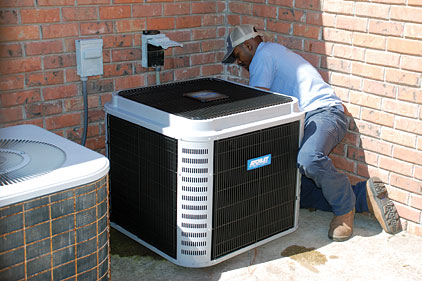Many in the industry expected a full-scale switch from R-22 to HFC-410A for air conditioning systems with the high-profile announcement from the United States Environmental Protection Agency (EPA) that as of 2011 equipment could no longer be shipped with R-22. However, a so-called loophole was discovered in the EPA wording that allowed R-22 components, such as condensing units, to be shipped as long as they were not factory-charged with R-22 and that they were used in retrofit applications for existing R-22 systems.
According to Francis Dietz, vice president for public affairs at the Air-Conditioning, Heating and Refrigeration Institute (AHRI), market forces pushed every major OEM to continue to manufacture and ship dry R-22 condensing units. The rationale was that keeping existing R-22 units operating was a less costly way to provide air conditioning than replacing them with R-410A units.
With R-22 in a phaseout mode, AHRI went on record asking the EPA to, in effect, close the loophole. AHRI was later joined by Carrier Corp. with the same request.
As of mid-October 2011, Dietz said there had been no action from the EPA on the request. He said he expected dry-shipping of R-22 units to continue through 2012.
He said the primary factor that would curtail dry-shipping R-22 units would be dwindling supplies of R-22, which is facing an ongoing step down in production allocations.
Dietz also said other factors that could end dry-shipping would be EPA or congressional action on the loophole or market demand driving a move away from R-22 to -410A. But he said the supplies of R-22 would be the most likely driver.
Supplies
After the major step-down in supplies of virgin R-22 to 25 percent of 1999 levels at the start of 2010, the industry entered a period of gradual phasedown each year that resulted in the phaseout of R-22 from new equipment in 2010. A complete phase out of R-22 is scheduled for 2020.
In terms of actual metric tons of production allowed in 2012, that number was unclear when this article was written in early November. At that time, Matt Ritter, director, government affairs for Arkema said, “All producers, importers, and market players are awaiting EPA’s 2012 allocation rule. We understand it is being considered at the Office of Management and Budget (OMB) now and will be published as a proposed rule.”
More than likely, several million more metric tons of new R-22 will no longer come to the market in 2012. But there is not expected to be a shortfall in the coming year. In fact, at the Refrigeration Service Engineers Society’s annual conference in November in Norfolk, Va., Rusty Walter, an instructor at the Hill Phoenix Learning Center, showed a slide indicating the shortfall would not occur until 2016.
Joyce Wallace, North American marketing manager for DuPont, said, “Reports of reduced R-22 demand over the past several years has raised concern by the EPA and other industry stakeholders that service demand estimates in the 2008 report were overestimated.
“In addition, the EPA recently reported 2010 reclaim numbers to be only 5.8 percent of the anticipated demand compared to the anticipated need for 20 percent mentioned in the 2008 report. The EPA has asked industry stakeholders for comments regarding acceleration in the step-down to more closely match market demand, and that could further reduce supply as early as January 2012.
“If the EPA accelerates the 2012 allowance reduction, it is possible that a tightening of R-22 supply could occur in 2012 with an even greater potential for supply shortfalls in the 2013-2015 time period.”
Publication date: 12/05/2011





